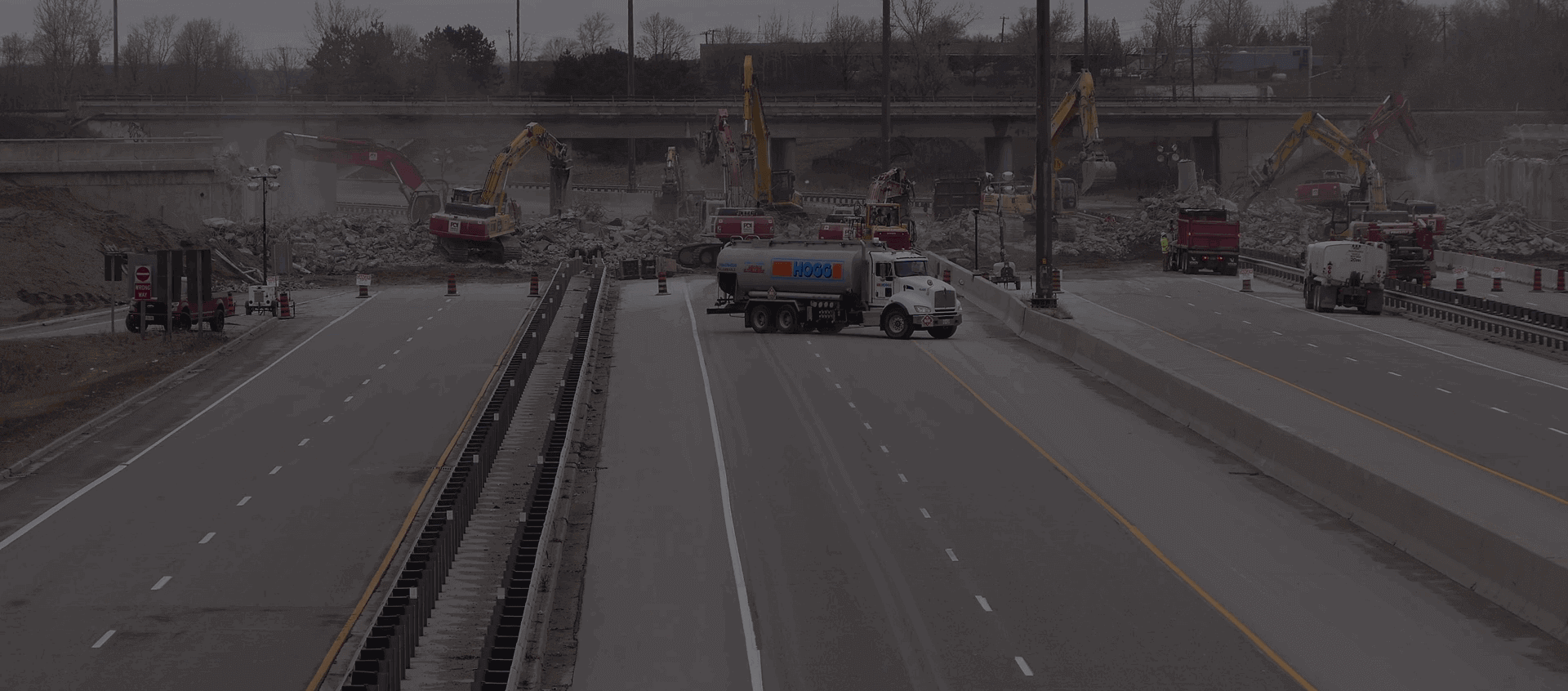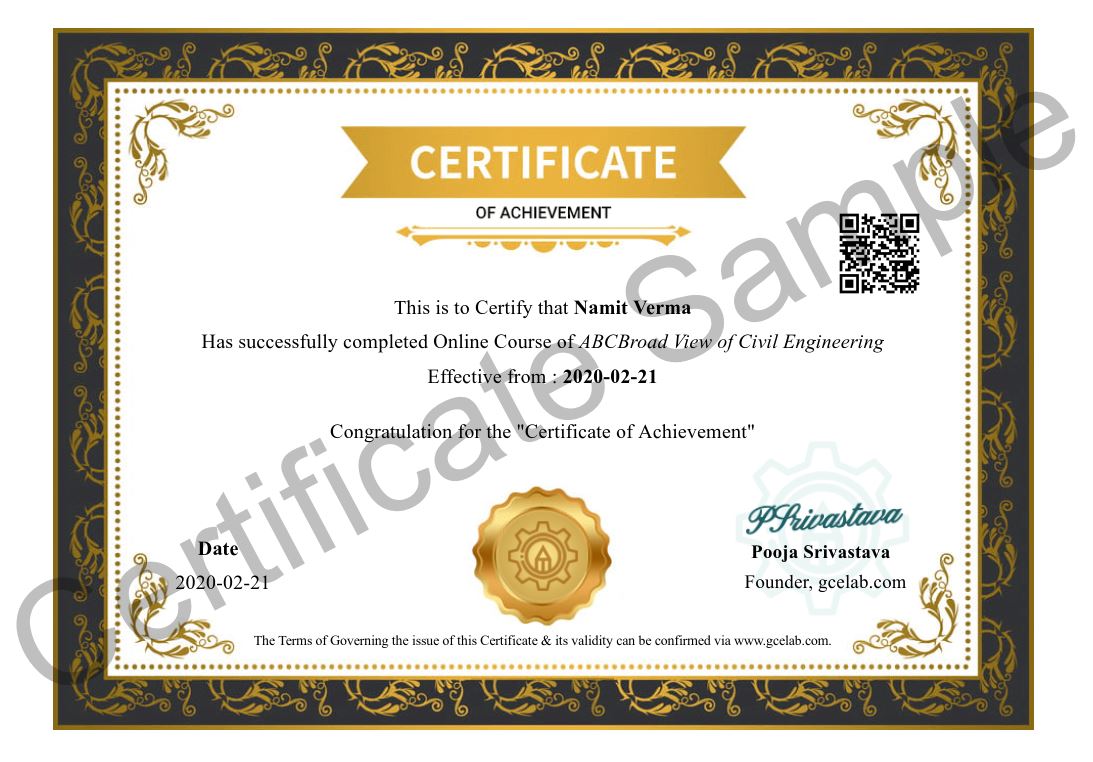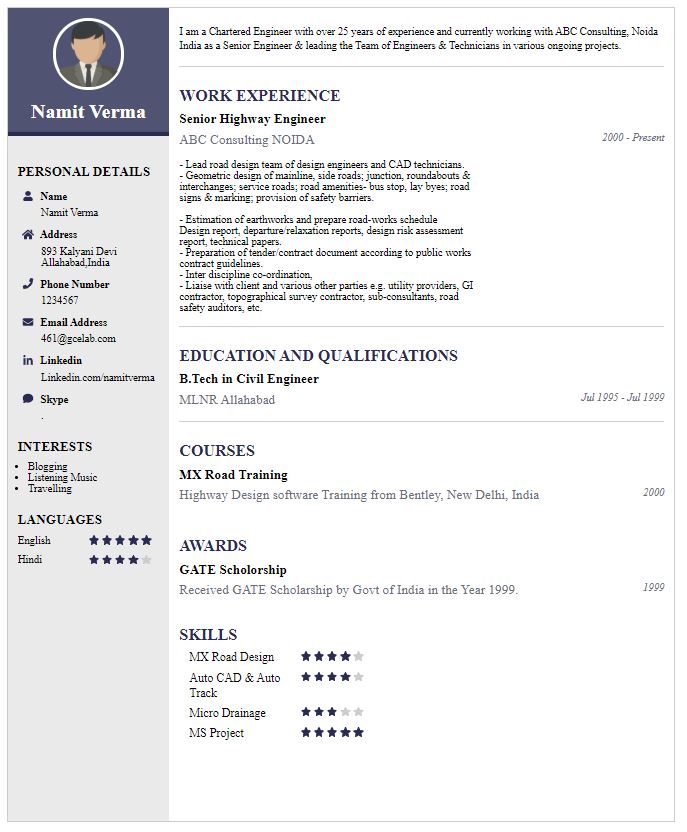
Our mission is to provide professionally trained Civil Engineers for all type of civil engineering services. Increase the supply of efficient & highly skilled Civil Engineers and serve the Civil Engineering Community.
Read MoreRegister with us and see our online courses. Some course modules for free. Course content enrich with current Industry demand, latest design software requirements & construction practices

Skill Improvement Leads to Employability:- GCE Evaluates & Provides a Detailed Performance Result.

At GCE, we provide course completion certificates of all courses. Our certificate comes with unique QR Code to validate it online & download it whenever needed.

We build your CV with professionally designed Resume Builder Application. Our Resume Builder is not just another resume creation tool; it is the finest tool to present your career graph.
Copyright © 2025 Gurukul of Civil Engineers | All Right Reserved | Design & Developed By Ntier Infotech India.